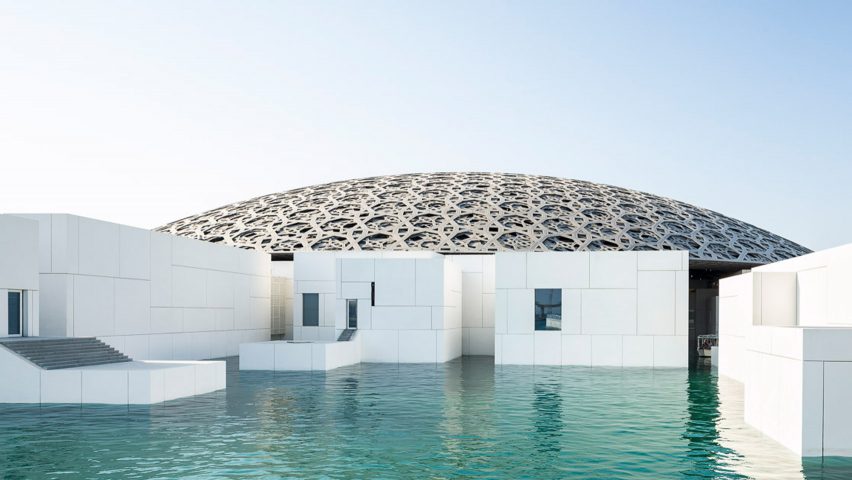
Louvre Abu Dhabi and Nigeria's World Cup shirt among Designs of the Year 2018 nominees
The Nigerian World Cup football kit, Jean Nouvel's Louvre Abu Dhabi museum and Rihanna's Fenty beauty range are among the shortlist for Designs of the Year 2018, announced today by London's Design Museum.
A structure made from mushroom mycelium, an artificial island and vegan furniture are also among the 87 nominees for the Beazley Designs of the Year awards, which spotlights the products, concepts and designers who have had the biggest global impact over the past year.

Chosen by practitioners, academics and curators, the shortlist covers six categories: architecture, digital, fashion, product, graphics and transport.
Many entries are focused on socially responsible design, such as Forensic Architecture's exhibition of its work uncovering war crimes through architectural analysis.
Other focus on environmental concerns, such as a water bottle made from responsibly sourced paper with a sugarcane lid, set up by Will Smith's actor son Jaden, and a concept line of furniture by Formafantasma that uses smartphone cases in its production rather than using extracted metal.
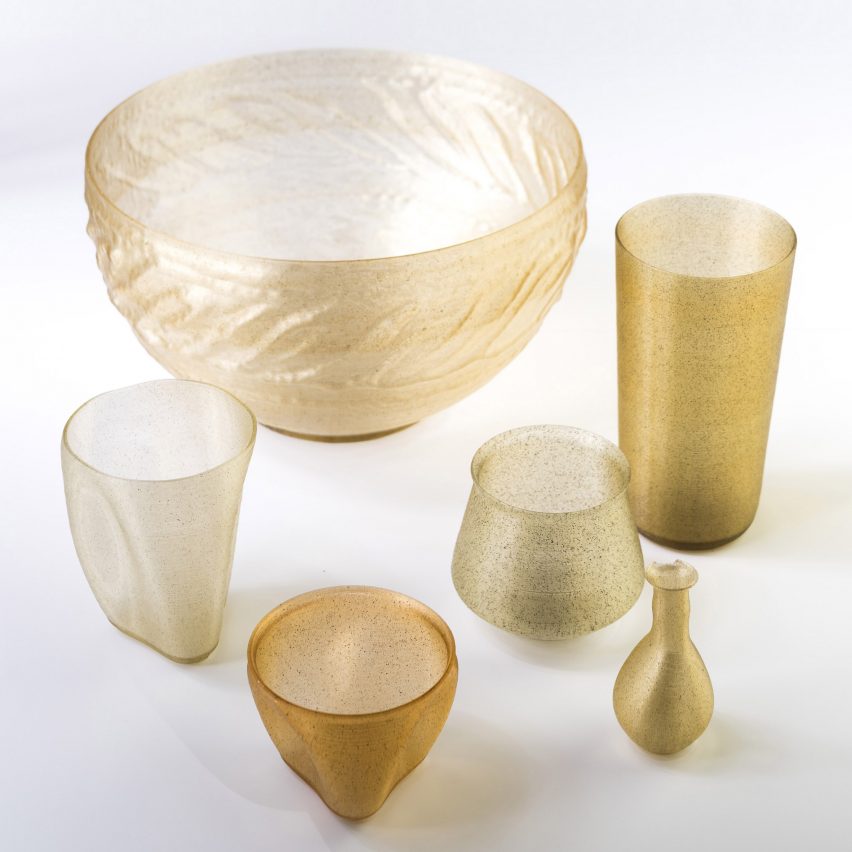
Other examples of concern about the overuse of material resources were demonstrated by the nomination of a mobile, solar-powered recycling centre by Trashpresso and Algae Lab by Studio Klarenbeek & Dros at Atelier Luma. The project explores the potential of algae as an alternative to non-biodegradable plastic. Harvested algae is dried and processes into polymers for 3D printing.
The list also features designs aiming to simplify our approach to complex medical problems, such as SurgiBox, an operating theatre that fits in a backpack. Others include a walking stick that aims to reduce the stigma around using a mobility aid, and a simple portable eye test.
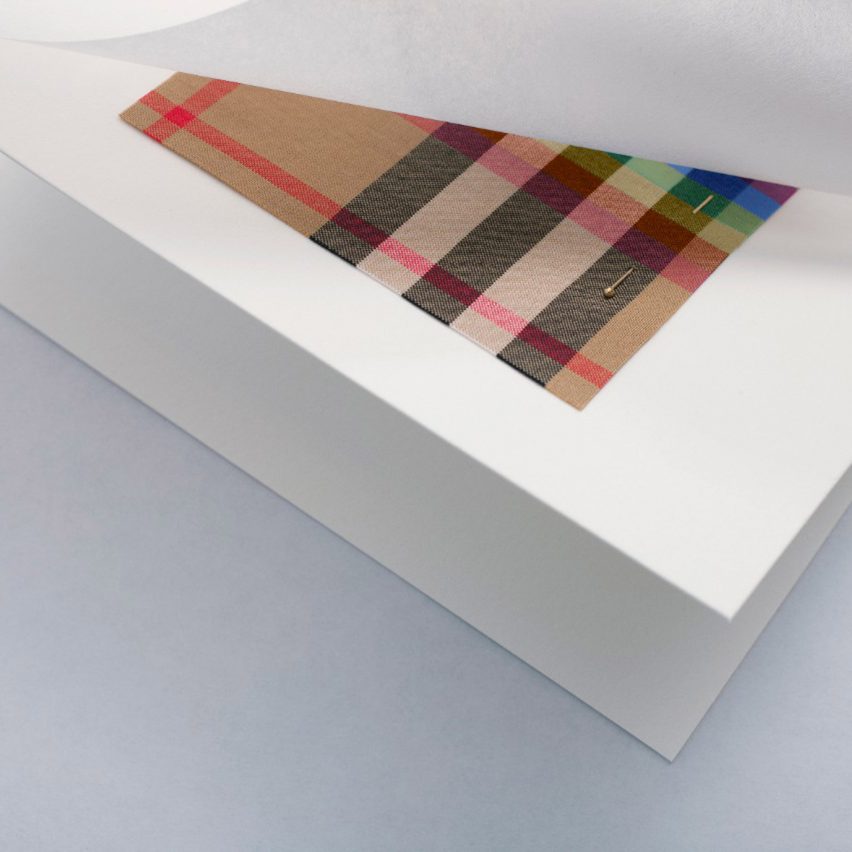
Big fashion names are spread across the categories with Burberry, Gucci, Lacoste and Rihanna's Fenty brand all nominated.
Nominations in the fashion category demonstrates a commitment to inclusivity in design, with two collections of gender-non specific clothing among them. Burberry's Rainbow Check, by outgoing designer and chief executive Christopher Bailey, melds the fashion house's signature print with the rainbow symbol of LGBTQ activism. It sits alongside against E Carter's costume designs for the film Black Panther.
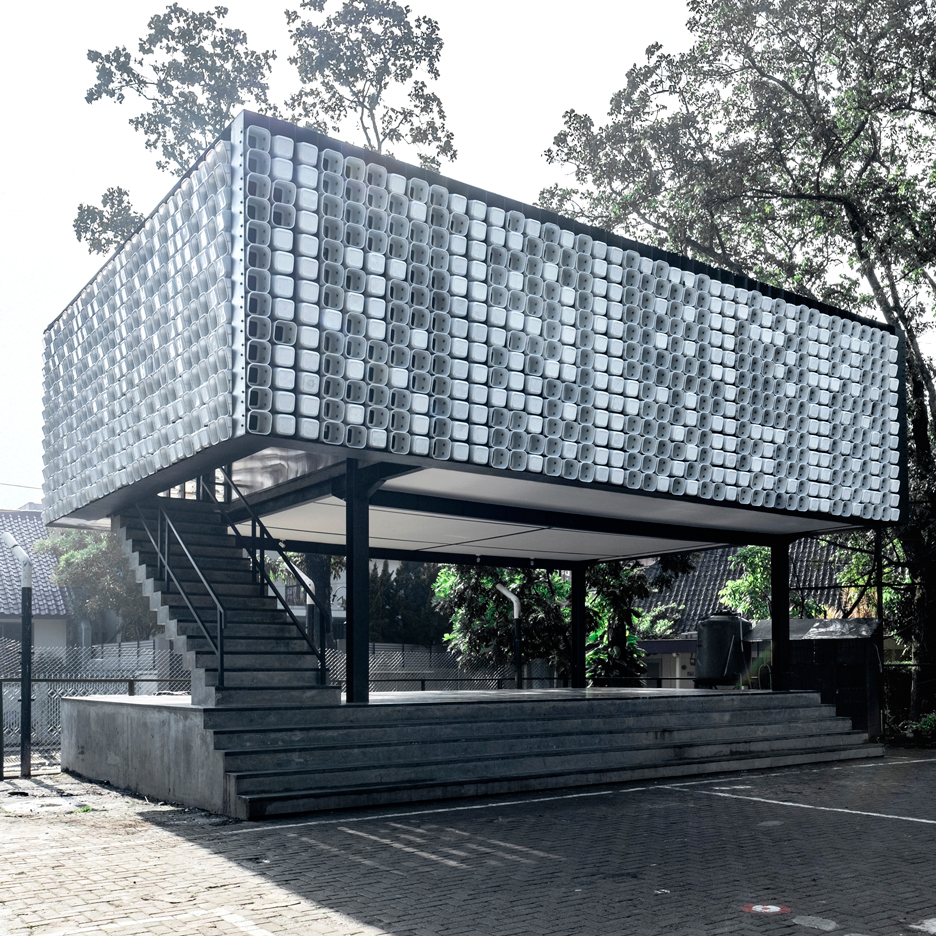
The architecture category encompasses several small-scale projects, such as a micro-library in Indonesia with a facade made from ice cream buckets, a project transforming bomb shelters in Beijing into community spaces and a textile studio in the foothill of the Himalayas.
These appear alongside bigger projects, such as MAD's Chaoyang Park Plaza in Beijing and the Qatar National Library by OMA.
Two bikes – one electric and one for the bike-sharing platform Mobike – appear among the transport category shortlist, alongside Virgin Hyperloop One, which aims to revolutionise travel by propelling passengers at speeds of up to 670 miles an hour in a low-pressure tube.
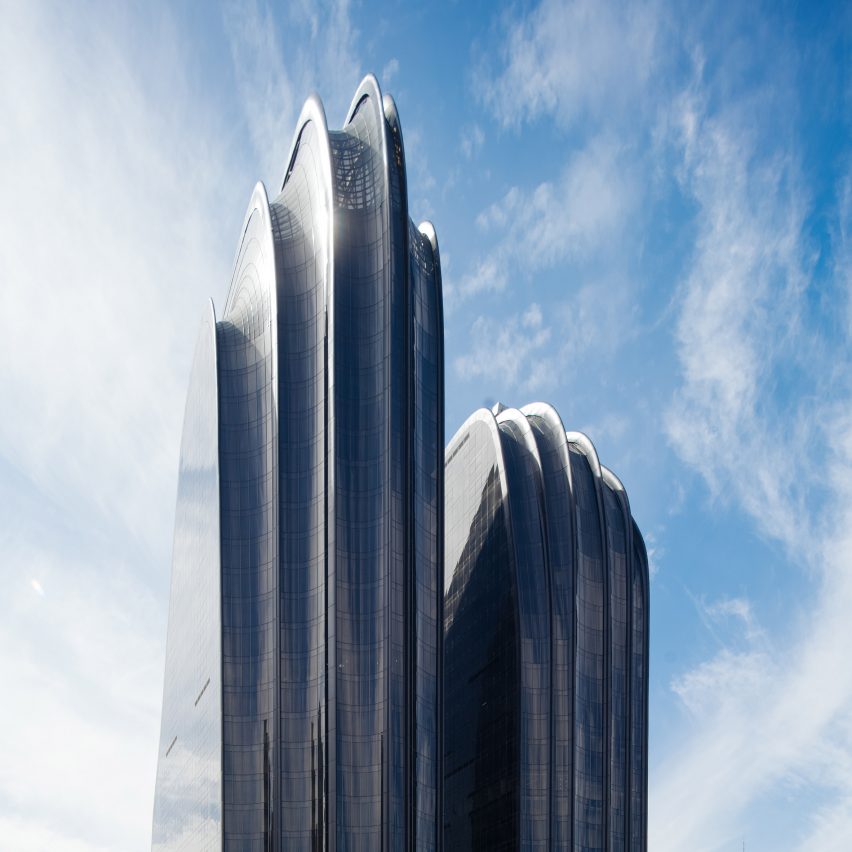
A winner in each category will be announced on 15 November, plus an overall winner will win the title Design of the Year.
Previous winners of the Design of the Year prize include Edward Barber and Jay Osgerby for the London 2012 Olympic Torch and Shephard Fairey for his Barack Obama Hope poster.
Fairey was among number of designers who demanded the Design Museum remove their work from the Hope to Nope exhibition this year, following a controversial event for an Italian defence manufacturer.
An exhibition of all the nominated designs opens at the Design Museum tomorrow and continues until 6 January 2019.
Read on for a description of each project from the Design Museum:
Fashion
Burberry Rainbow Check by Burberry
Rounding off ten years as the company’s Chief Creative Officer, Christopher Bailey’s final collection for Burberry was dedicated to an update of the classic Burberry check. The Burberry Rainbow check integrates the colours of the rainbow flag, used as a symbol of LGBTQ+ activism and solidarity. The release of the check coincided with Burberry making significant donations to support three LGBTQ+ youth charities.
Nigeria National Football Team: National Team Collection by Nike
For the 2018 World Cup, Nike set out to design a football kit that would reflect the youth and dynamism of modern Nigeria and its diasporas. Based around the concept of ‘Naija’, or ‘new Nigeria’, the collection reinterprets contemporary street style through the vibrant green and white of Nigeria’s national colours, and abstracted feather patterns that pay homage to its ‘Super Eagles’ team kit of the 1994 World Cup.
Black Panther costume design by Ruth E Carter
To create the costumes for Black Panther – the Marvel Comics superhero film set in Wakanda, a fictional African nation of united tribes, untouched by colonialism – designer Ruth Carter drew inspiration from a rich array of African ceremonial dress. This included Surma and Mursi lip plates, Zulu headdresses, Maasai warrior armour and Ndebele neck rings, all reinterpreted to create a compelling Afro-futurist aesthetic.
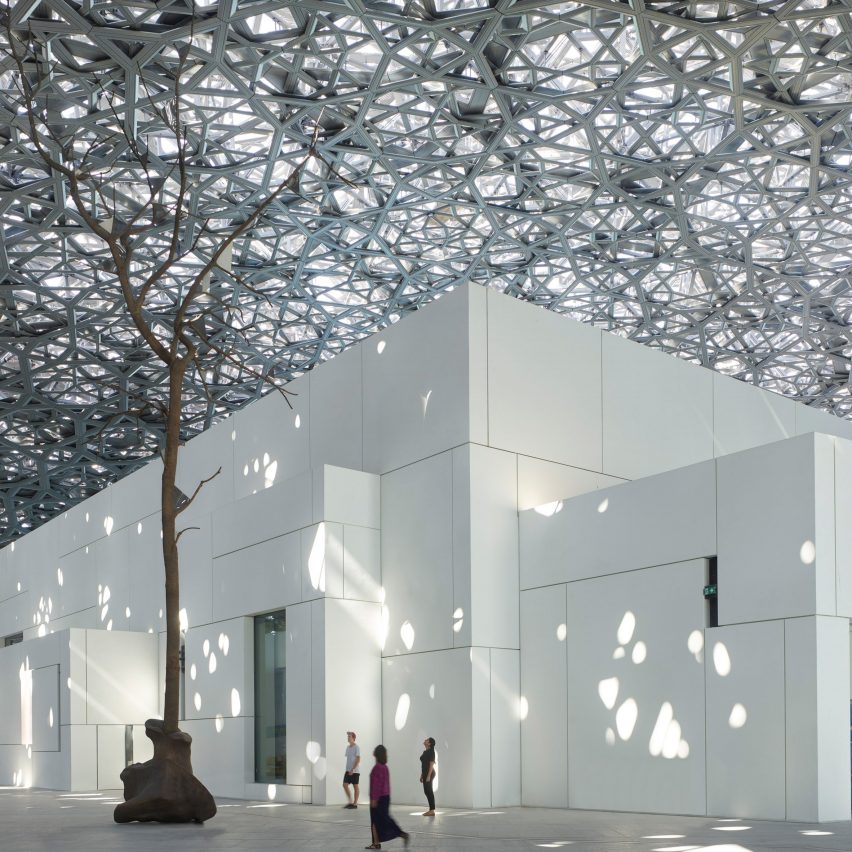
Royal Ballet costumes for Christopher Wheeldon’s production of Corybantic Games by Erdem Moralıoğlu
Womenswear designer Erdem Moralıoğlu created 24 costumes for a new ballet set to Leonard Bernstein’s Serenade, after Plato: Symposium. Inspired by the Classical Greek themes of the piece, Erdem juxtaposed armour-like ribbon detailing with ethereal sheer tutus, while the champagne-coloured satin bodices and careful pleating evoked the 1950s era of Bernstein’s original score.
Zoa by Modern Meadow
Zoa is a new collection of products made of biofabricated leather, which replicates the texture and suppleness of natural leather without using any animal products. Instead, the material is grown from collagen, natural leather’s main component, but in this case derived from yeast. As well as eliminating the slaughter of cows, and the environmental impact of raising them and tanning their hides – an often toxic process – Zoa’s bio-leather opens up new design possibilities, including shapes, densities and other properties not previously possible.
Goldwin Ski Jacket by Goldwin with Spiber materials
The Goldwin Ski Jacket is made with a synthetic thread that replicates the amino acid sequences found in spider silk. Spider silk is an extremely strong material, but is difficult to harvest, inspiring Spiber to create a synthetic replica. The new material is made without using petrochemicals, making it sustainable as well as an extremely durable alternative for sportswear. Spider silk is strong, supple, and shock absorbent, making it ideal for protective clothing.
Hotel Palomo: Spring Summer 2018 Menswear by Palomo Spain
Fashion house Palomo Spain creates gender-bending clothes for men. With local references to Spanish culture, the flamboyant designs – many using vintage fabrics and the expertise of seamstresses from the label’s hometown of Madrid – navigate between couture and cross-dressing. Distinctions between masculinity and femininity are broken down, dismissing gender as a category. Beyoncé was pictured wearing the Palomo Spain genderless brand in the first photo after the birth of her twins.
D-Staq RFTPi denim jacket by G-Star RAW with Artistic Milliners, DyStar and Saitex
Denim brand G-Star RAW has developed the world's 1st Cradle to Cradle Certified™ GOLD G-Star denim fabric which is made out of 100 per cent organic cotton. The cleanest indigo dyeing technology was introduced, using 70 per cent less chemicals, no salts and producing no salt by-product during the reduction and dyeing process. The most sustainable and responsible washing techniques were developed to ensure that 98 per cent of the water will be recycled and re-used, and the other 2 per cent will be evaporated.
TELFAR Fall-Winter 2018 Collection by TELFAR
Telfar Clemens’ fashion line is based around the simple slogan: ‘It’s not for you – it’s for everyone.’ Creating unisex clothing since 2005, Clemens’ latest collection was presented not on a runway but in the form of a concert, performed by friends of the brand and featuring an adaptation of ‘Grateful’ by gospel singer Hezekiah Walker. The collection was modelled by both men and women, and is intended to be equally suited to both.
Vigilamus by Matty Bovan
Matty Bovan’s debut collection was inspired by his late grandmother and her wardrobe of tweed suits. Working from a converted shed behind his parents’ house in York, the young designer took this prim and proper fabric and reinterpreted it in a post-apocalyptic style, using a specially made tweed of exaggerated chunky yarns with contrasting woven elements and ragged edges. The featured evening gown comes complete with a balaclava headpiece of tulle and red balloons, created by Stephen Jones Millinery.
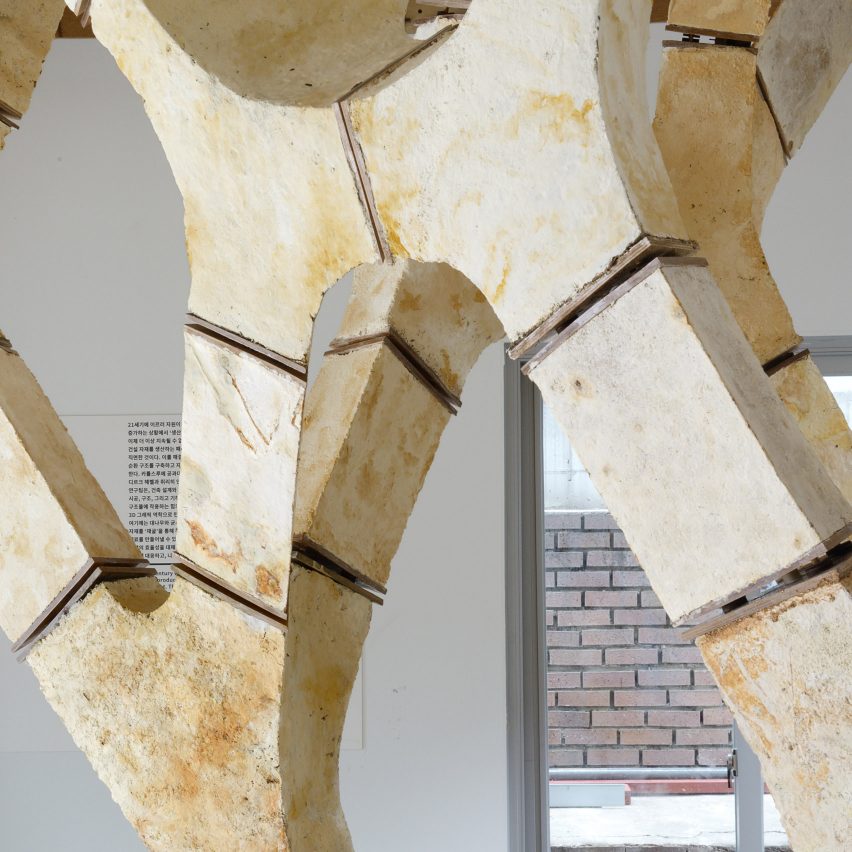
Made by Rain by Aliki van der Kruijs
Made by Rain is a textile collection in which rainfall is recorded on sheets of silk. The designer has developed a technique called ‘pluviagraphy’, by which rainfall causes a transfer of colour on the surface of the fabric. Each piece is unique and comes with information about the location, time and weather conditions under which it was made.
Horizon Infinity by Marisa and Marie Gnanaraj
Horizon Infinity is a collection of menswear by Sri Lankan fashion designer Marisa Gnanaraj. Created with her mother, textile designer Marie Gnanaraj, the line is made exclusively in handwoven Sri Lankan fabric. Its tailored reinterpretations of traditional garments, along with its vibrant, desert-inspired palette, aim to give contemporary expression to the colourful men’s clothing of the island’s pre-colonial past.
Architecture
MycoTree is an architectural system made of load-bearing mycelium (the root-like fungal colonies that produce mushrooms). While many designers have investigated the possibilities of using mycelium to make furniture, lighting, or cladding for buildings, MycoTree results in an entire self-supporting structure. Grown at a mushroom farm in Indonesia and fitted together using bamboo endplates and metal dowels, the structure offers a sustainable alternative for building construction in the future.
Copenhagen Islands by Marshall Blecher and Magnus Maarbjerg
Copenhagen Islands is a series of floating platforms that encourage public recreation in Copenhagen Harbour. The project aims to bring life and activity to the city’s waterways in response to rapid urban development, while anticipating rising sea levels. The platforms each offer different amenities and features, such as a sauna or diving board, and can be brought together as a cluster for special events.
The Common Stove by Matali Crasset
The Common Stove was designed for ‘Faraway, So Close’, the 25th Biennial of Design in Ljubljana. The aim of the biennial was to test the potential of rural areas as an alternative to urban living. By placing a large domestic stove in the woods, the project aimed to reactivate the lost and forgotten links between the local community and the forest, inviting the area’s residents to spend time together around the stove’s emanating warmth.
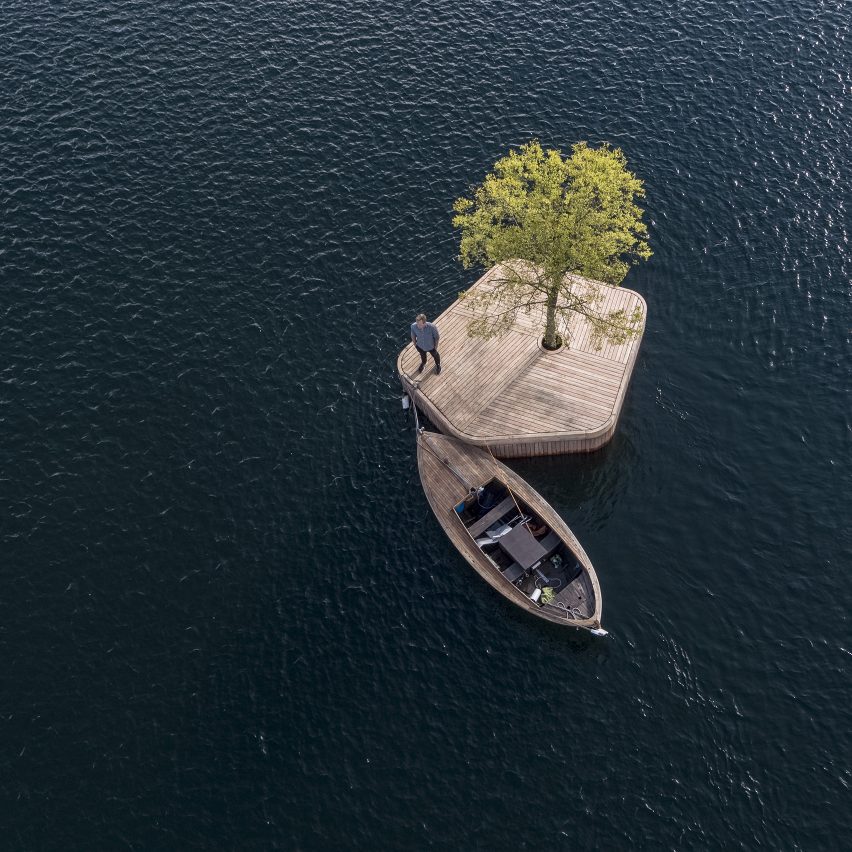
SESC 24 de Maio by Paulo Mendes da Rocha and MMBB Arquitetos
The SESC 24 de Maio is a non-profit arts and recreation centre housed in a former office building in downtown São Paulo, Brazil. The building has been adapted to house a theatre, restaurant, library, dentist practice, exhibition space and other facilities, all of which are accessible via a continuous ramp that runs along all fifteen floors. With an Olympic-sized rooftop pool, the complex adds a bright spot to the otherwise grey landscape, visibly enlivening the local area.
Digua Community by Shu Zhou
The Digua Community is a social design initiative transforming abandoned bomb shelters in Beijing into shared community facilities for gatherings, events, and other activities. For its second project, realised in an underground shelter in the Jianxiyuan neighbourhood, area residents were invited to co-design the spaces, offering a rare opportunity in the Chinese capital for direct grassroots participation in local planning.
Small is Meaningful by Design Trust Futures Studio
Facilitating collaboration between the public and private sectors in Hong Kong, Design Trust Futures Studio launched Small is Meaningful. The project saw four mentor–mentee teams tackle Hong Kong’s severe shortage of public space by designing, and in some cases implementing, micro-park concepts across different neighbourhoods. This included a series of portable public furniture, a mobile park built on the back of a truck, and a skip transformed into a children’s playground.
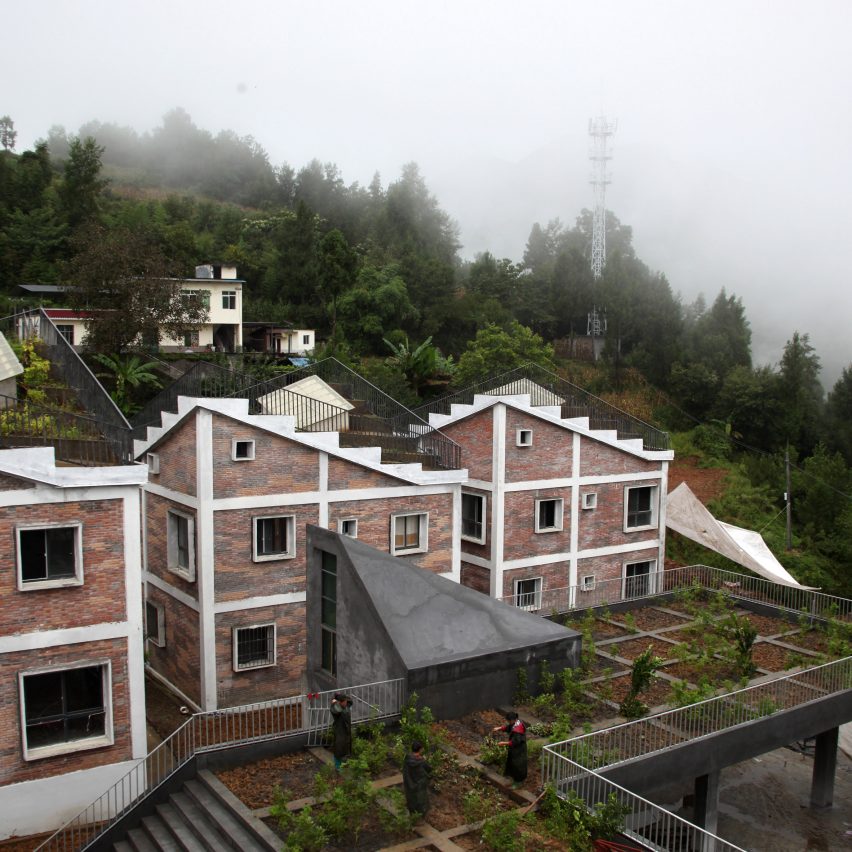
Jintai village reconstruction by Rural Urban Framework
Jintai village in China’s Sichuan province was almost entirely destroyed by an earthquake in 2008, and again by a major landslide in 2011. Rural Urban Framework has since been working with residents to rebuild their community in a way that encourages sustainability, resilience and self-sufficiency. Densely arranged, the new village includes a community centre and twenty-two houses, of various sizes and configurations, that use local materials and incorporate rainwater harvesting, natural light and ventilation, and terraced roof gardens for collective and household farming.
Chaoyang Park Plaza is a 220,000 square metre office and retail complex of ten buildings situated on the southern edge of one of Beijing’s largest parks. Drawing on classical Chinese gardens and shan shui landscape painting, its forms evoke eroded mountains or rock formations, intentionally prompting a culturally specific blurring of the natural and artificial. The tallest buildings’ vertical fins provide energy efficient ventilation and filtration, while a pond at their base helps cool the complex’s interiors in summer. The project was awarded LEED Gold Certification by the US Green Building Council.
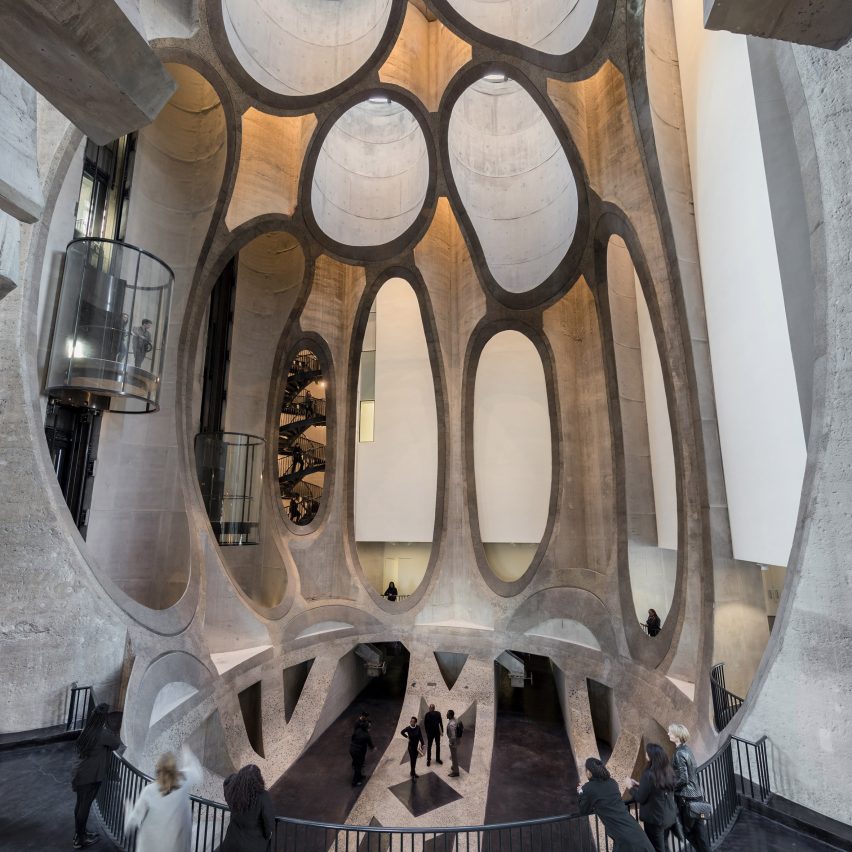
Zeitz Museum of Contemporary Art Africa by Heatherwick Studio
The Zeitz Museum of Contemporary Art Africa, in Cape Town, strikingly repurposes a former grain silo made obsolete by containerised shipping. For this post-industrial project, designer Thomas Heatherwick carved out a dramatic, skylit central atrium from within the original 42 tightly packed concrete silos to reveal startling geometries, while also converting them for gallery use. Faceted glass windows were also punched out of the building’s grading tower to create a kaleidoscopic effect.
Louvre Abu Dhabi by Jean Nouvel
Designed by French architect Jean Nouvel, the Louvre Abu Dhabi is an encyclopaedic art museum. It was set up through a 30-year agreement between the Emirati and French governments by which the Louvre and other French institutions are supplying expertise and loans for much of the content, while the museum builds a collection of its own. Inspired by traditional Arabian architecture, its cluster of buildings is covered by a sprawling latticed dome that provides shade while casting intricate shadows on the ground.
The new Qatar National Library celebrates the continued importance of books and public libraries in the digital era. In a single, open space, its more than one million books are displayed on terraces of marble shelving, interspersed with spaces for reading, browsing, and gathering, with views into a sunken, travertine-clad archive for rare books and manuscripts below.
Gulshan Society Jame Mosque by Kashef Chowdhury/URBANA
The Gulshan Society Mosque in Dhaka rethinks the layout of traditional mosque architecture by placing seven identical prayer halls stacked one on top of the other. The project’s aim was to accommodate a large congregation on a small plot, while also providing an attractive landmark for the densely packed area. The building’s outer pattern is an abstraction of a prayer in Kufic script.
Stone Matters by AAU Anastas/Scales and Laboratoire GSA
Stone Matters is a pavilion in Jericho, Palestine, built of 300 interlocking, structural stone components. Showcasing new possibilities for a building material with deep traditions in the area but now used almost exclusively for superficial cladding, the project combines digital design with stereotomy stone-cutting techniques that rely on existing local know-how. The aim is to spur a revival of masonry that will prevent knowledge of the material from being lost.
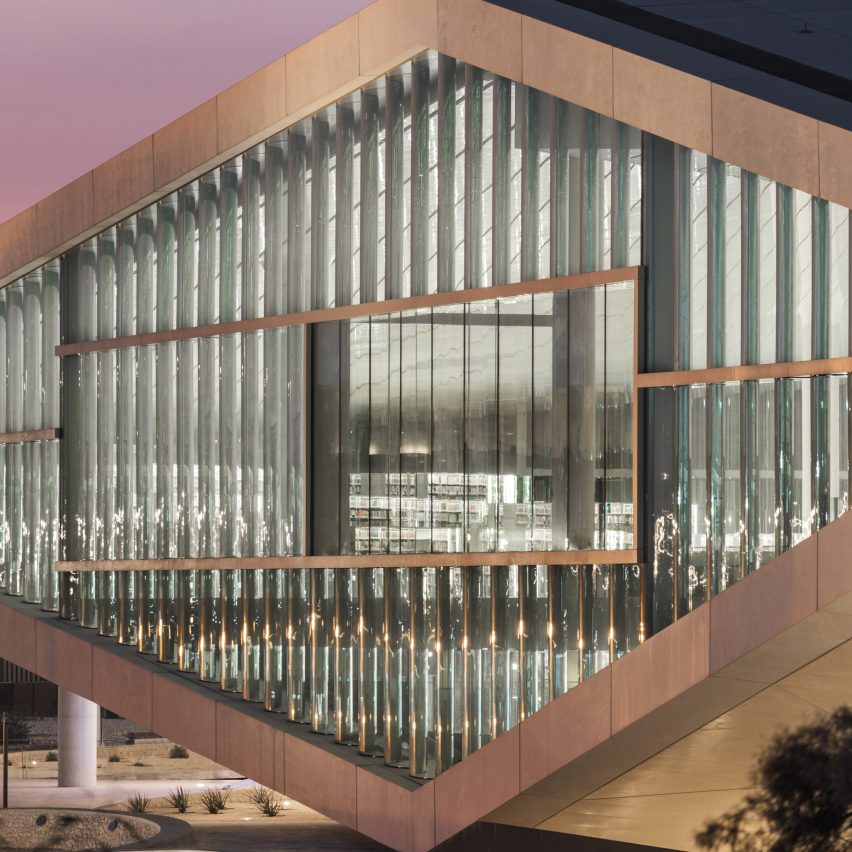
Microlibrary at Taman Bima by SHAU Indonesia
Taman Bima microlibrary was the first of a series of small libraries to be constructed throughout Indonesia in an effort to improve the country’s literacy rate. Situated in a small square, the building was constructed on a pre-existing stage, with a façade system of plastic icecream buckets inserted in metal frames. The buckets are readily available, cost-efficient, and easy to assemble, while allowing for natural lighting and ventilation.
Fuyang Cultural Complex by Amateur Architecture Studio
Architect Wang Shu’s Fuyang Cultural Complex is a large-scale project outside Hangzhou, China. It includes a history museum, gallery and archive. Incorporating Wang’s characteristic use of vernacular materials, forms, and spatial strategies drawn from Chinese gardens and landscape painting, the building features a dramatic, undulating roofscape where visitors can meander. Rural revitalisation is one of Wang’s greatest concerns, and he accepted the commission only after the local government agreed to let him restore and rebuild a nearby village.
Ganga Maki Textile Studio by Bijoy Jain of Studio Mumbai
Ganga Maki is a textile studio run by Japanese designer Chiaki Maki in the foothills of the Himalayas in northern India. Designed by Bijoy Jain of Studio Mumbai, its new home consists of weaving and dying workshops, a gallery, housing and other facilities, all arranged around a central courtyard and constructed by local craftsmen of brick, lime, stone and bamboo.
LEGO House is an activity centre for playing and learning with LEGO, set in the Danish town where the plastic building brick was invented. The centre offers a variety of exhibition spaces and public squares, including a roof terrace and pixelated staircases that double as informal auditoriums. Inside, four play zones are arranged by colour and programmed with activities to develop different aspects of a child’s learning: creative, cognitive, social and emotional.
Lumen by Jenny Sabin Architects
Lumen was a summer installation commissioned for the annual Museum of Modern Art and MoMA PS1 Young Architects Program in New York. Knitted from luminescent yarns, its tubular structures absorbed light throughout the day, which was then emitted at night. The installation, which took over the courtyard of MoMA PS1, was also embedded with sensors, allowing it to track the densities of bodies, heat and sunlight, while cooling mist ensured it remained a refreshing space for gathering.
Bío Bío Regional Theatre by Smiljan Radic, Eduardo Castillo and Gabriela Medrano
The Bío Bío Regional Theatre was commissioned by the Chilean government to rejuvenate the city of Concepción after a devastating earthquake in 2010. Its skeletal frame is wrapped in PTFE, a Teflon-coated fibreglass less than an inch thick. This unusual choice of material gives the building a sense of weightlessness but also an air of mystery; the light gleaming through its walls at night lures in passers-by and hints at the activity within.
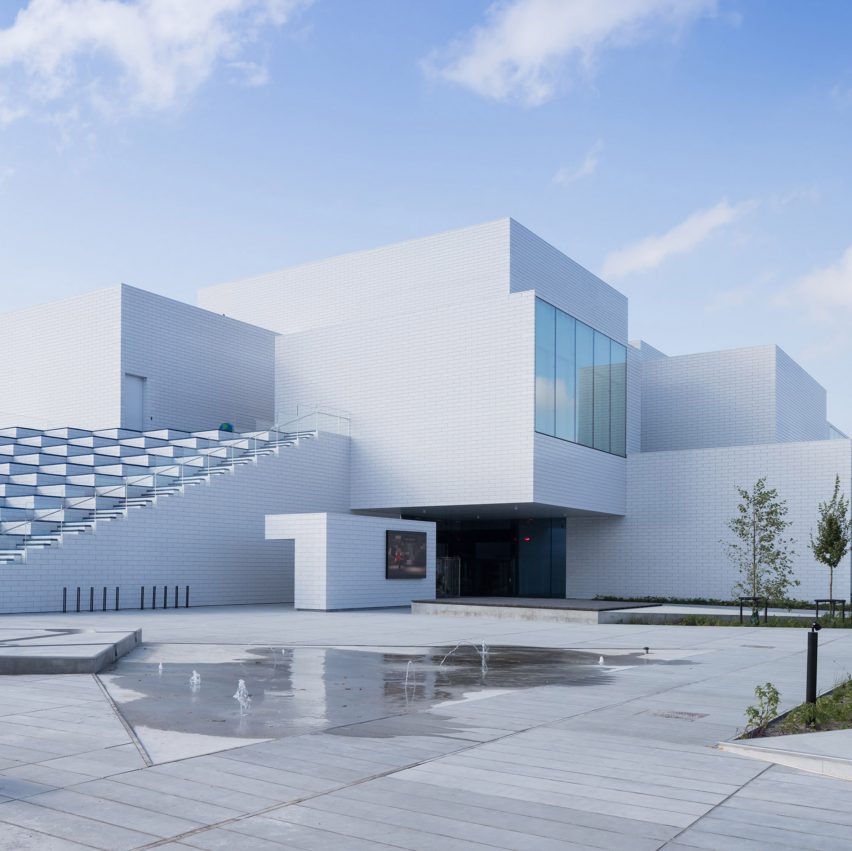
Digital
aibo ERS-1000 by Sony Corporation
The aibo ERS-1000 marks the return of Sony’s seminal aibo robotic dog after a twelve-year absence. Like its predecessor, it’s programmed to ‘learn’ and adjust its behaviour through interactions with its owners, but now has greatly improved artificial intelligence and facialrecognition capabilities using cloud computing. Whether for children, the elderly, or others who may feel isolated in increasingly fragmented societies, the new model’s deliberately cuter appearance – with its smoother features and more puppy-like OLED eyes – encourages owners to form emotional connections.
Franchise Freedom by Studio Drift
For their latest installation, Dutch duo Studio Drift choreographed a swarm of 300 illuminated Intel drones to fly above Amsterdam for a 12-minute performance. The drones were programmed to replicate the movements of swarms found in nature, reflecting on the tension between individual freedom and safety in numbers. The choreography was set to an original live score by composer Joep Beving.
Technology interfaces for Blade Runner 2049 by Territory Studio
Working closely with director Denis Villeneuve, Territory Studio created the technology interfaces for the sets of Blade Runner 2049. Building on that film franchise’s zeitgeist-defining visuals, the studio experimented with combining digital with analogue technologies, such as optical lenses, cine projectors, microfiche and card systems, to help realise the noir future depicted in the movie.
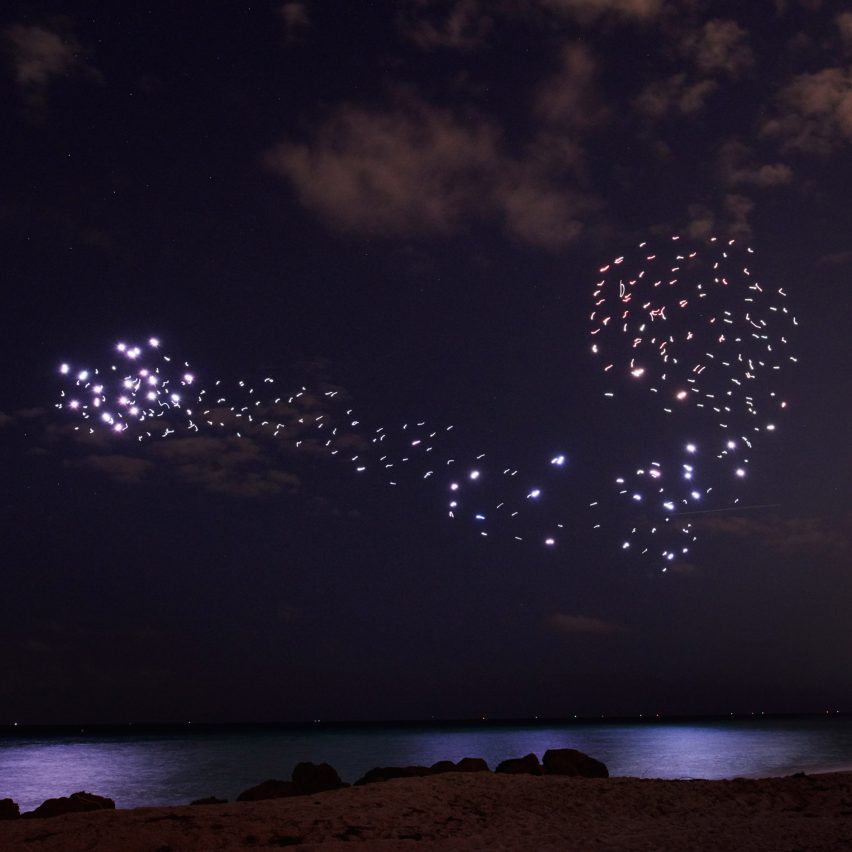
Choose Love shop by Help Refugees in partnership with Glimpse
Choose Love is a non-profit online shop where people can buy supplies for refugees. It offers items such as emergency blankets, school bags and children’s shoes, which can be purchased on its website for distribution to displaced people across Europe and the Middle East. Over the 2017 Christmas shopping season, Choose Love opened a temporary pop-up space in London’s Soho district.
Bad News by Gusmanson and DROG
Developed by Dutch organisation DROG and researchers at Cambridge University, Bad News is an online game that shows players how online media are manipulated to create fake news. By explaining how these deceptive practices work, the aim is to encourage critical news consumption and to build up the public’s resistance to false or misleading information. Players are taken through six key strategies of disinformation: impersonation, emotion, polarisation, conspiracy, discredit and trolling.
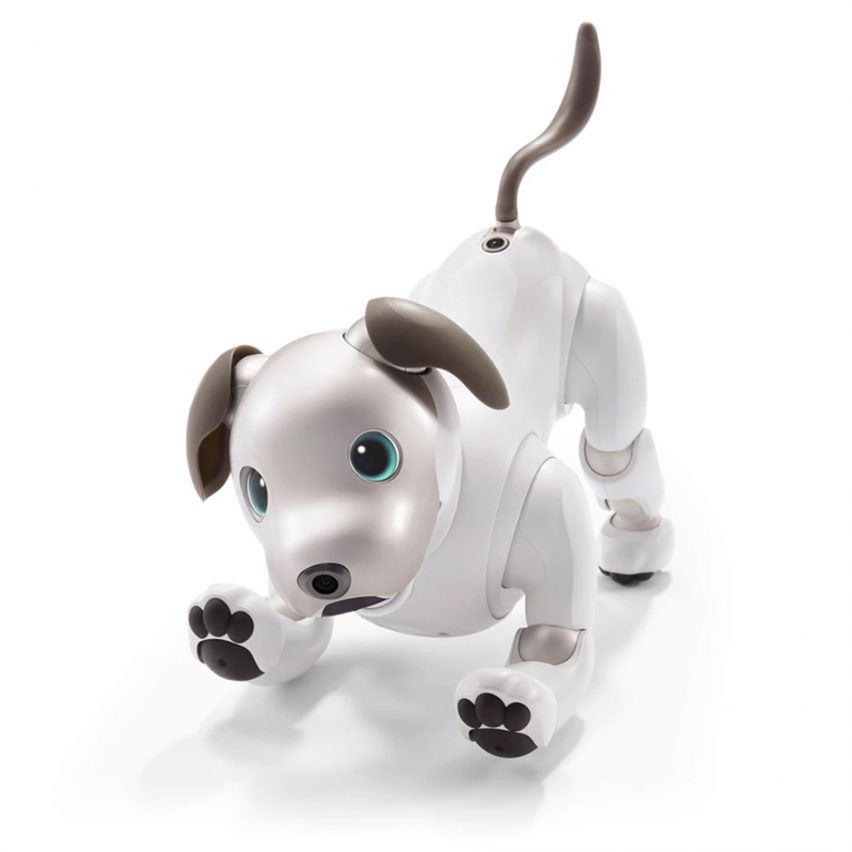
Gucci Spring Summer 2018 campaign: #GucciHallucination by Ignasi Monreal (artwork), Alessandro Michele (creative direction) and Christopher Simmonds (art direction)
For its Spring Summer 2018 campaign, Gucci collaborated with Spanish illustrative artist Ignasi Monreal on a series of surrealist works inspired by Renaissance and Pre-Raphaelite masterpieces. Van Eyck’s Arnolfini Portrait, Bosch’s Garden of Earthly Delights and John Everett Millais’ Ophelia were reimagined with models sporting lace-topped socks, Gucci logo tracksuits, diaphanous gowns and loafers. All of the works were digitally painted, and could be viewed as interactive animations through the Gucci app.
Verificado19s by Anonymous Collective
Verificado19s is a website that disseminated upto-date, corroborated information to the general public after a major earthquake struck central Mexico in 2017. Set up by a multidisciplinary team of graphic designers, lawyers, journalists and programmers in response to perceived government inaction, the site provided vital information such as which buildings were in danger of collapsing, where shelters were being set up and what medicines were available in hospitals. Only eye-witness statements were published.
Counter Investigations was a survey exhibition of work by Forensic Architecture, an independent research agency based at Goldsmiths University, London. The agency works to uncover miscarriages of justice and international war crimes through the architectural analysis of images. From official news and smartphone footage to satellite images, minute clues and fragmentary evidence are painstakingly analysed to create full 3D reconstructions of events, allowing the team to verify disputed information.
Space Debris – A Journey to Earth by European Space Agency with ID&SENSE and ONiRiXEL
Produced by the European Space Agency, Space Debris is a digital animation about the waste currently in orbit around the earth. Launched by humans, broken satellites, used rocket stages and other bits of space junk now enshroud the planet, posing the risk of catastrophic damage to spacecraft on their journey beyond earth. The disastrous effects of colliding with even small particles of debris can be seen in the nearby exhibit.
Graphics
Mushpit #10 by Mushpit with Richard Turley
Challenging the mainstream women’s magazine format, Mushpit brings together a mix of media-industry satire, relationship angst and left-wing politics. For its tenth issue, themed around ‘courage’, Mushpit collaborated with MTV Creative Director Richard Turley to explore issues such as grief, hysteria and fortitude. Playing with the visual language of the internet, the magazine provides a humorous and irreverent look at issues facing young women today.
Netherlands Women’s National Football Team crest by Wieden+Kennedy Amsterdam for Nike
Ahead of the Women’s European Championship, the Royal Dutch Football Association replaced the lion of the team’s royal crest with a lioness, designed by Wieden+Kennedy. This was the first time that the crest had been changed in 46 years, reflecting the Football Association’s desire to promote inclusivity and increased female participation in the sport. The logo also reflects the pride of the national women’s team, known as the ‘orange lionesses’.
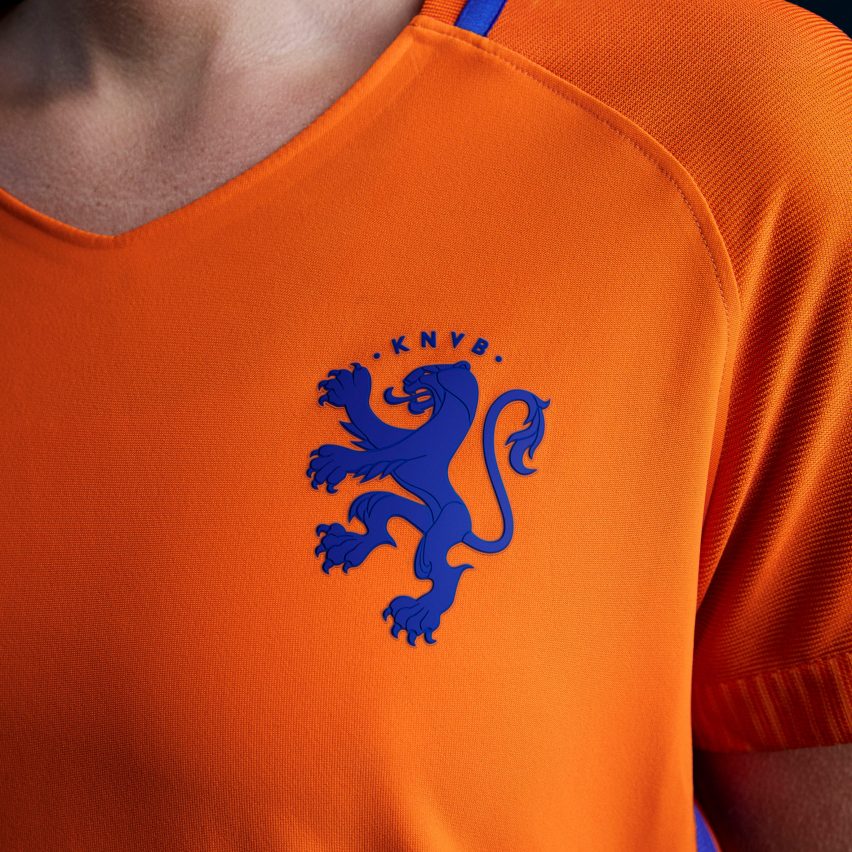
Migrant Journal by Offshore Studio (art direction) and Justinien Tribillon (editor)
Migrant Journal is a six-issue, print-only publication that investigates the modes by which people, goods, information and even nature circulate around the world. Its content includes a variety of text, maps, infographics, data visualisation and photography, all compellingly presented to explore critically the relationship between global systems of flow and notions of territory and space.
Aravrit by Liron Lavi Turkenich
Aravrit is an experimental writing system that hybridises Hebrew and Arabic. Each word or letter consists of an upper half in Arabic merged with its Hebrew equivalent below. Its Israeli designer created the system to allow speakers of both languages to read the same script, encouraging each to find commonalities with the other and signalling a path towards peaceful cohabitation.
Visual identity for the Czech Railway Infrastructure Association by Studio Marvil
Studio Marvil have created a new logo and graphic identity for the Czech national railway, SŽDC (Správa Železniční Dopravní Cesty). Deciding that its name was impractically long, the designers chose the letter Ž as a symbol of the entire network, železnice being the word for ‘railway’ in Czech. The letter has been modified to resemble three parallel railway tracks linked by a railroad switch, and has been applied to everything from train carriages and posters to stationery and staff uniforms.
Hoarding for the Apple Store Taipei 101 by Yang Shiyi
Unlike what we usually see on the hoarding around a soon-to-be-opened store, Yang Shiyi’s design for Taiwan’s firstever Apple Store, in Taipei, doesn’t rely on the company’s products or branding. Instead, he created a seventy-five-metre-wide artwork that spanned the entirety of the storefront. Using the technique of Chinese paper-cutting – an ancient artform dating back centuries – with craft knives, Yang cut out an elaborate image of a banyan tree filled with creatures such as black bears, leopard cats and owls. The design suggests that the store is not just a place to sell products but also a space for people to congregate, interact and exchange ideas.
Oto Nové Swiss by Studio Feixen
In collaboration with the performance venue Café Oto, Swiss graphic designers Studio Feixen created an interactive poster for Oto Nové Swiss, a three-day music festival in London. Rather than print posters and paste them around the city, they decided to create a purely digital campaign, experimenting with moving typography and allowing viewers to create sounds by moving the cursor over the interactive design.
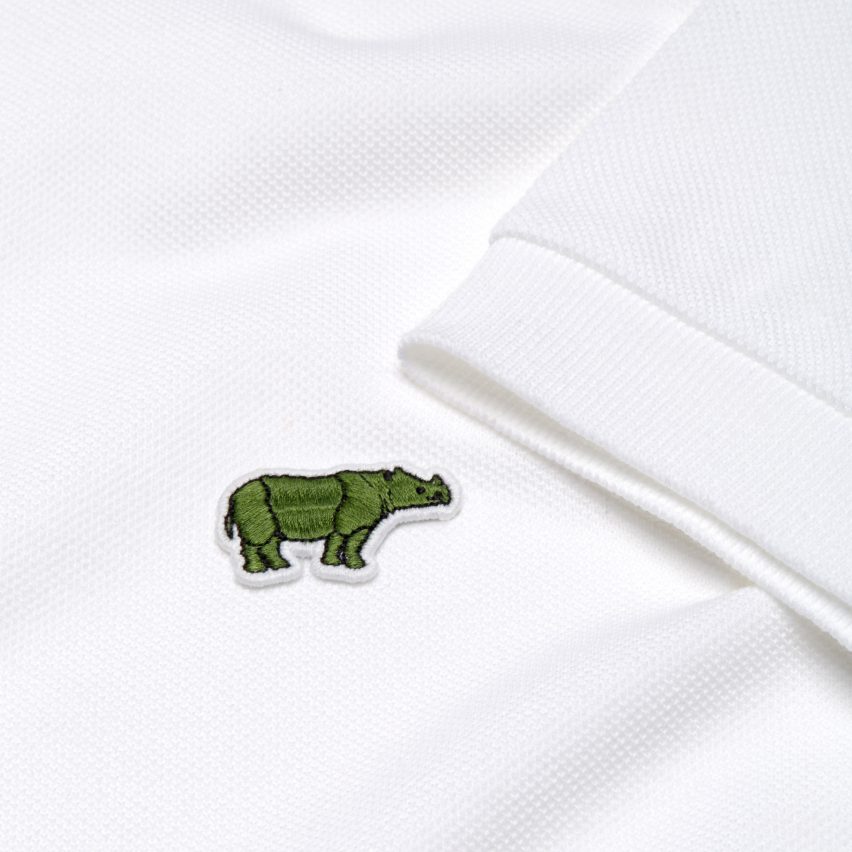
Trash Isles by Plastic Oceans Foundation with LADbible
An accumulation of plastic waste covering an area the size of France is currently floating in the Pacific Ocean – though little is being done to address it, as it occupies international waters. Involving the creation of a ‘national identity’, complete with passports, stamps and currency, the Trash Isles campaign was launched to enlist citizenpetitioners to persuade the United Nations to recognise the waterborne mass of debris as an official country, forcing the global community to deal with it as a member of the UN Environmental Charter.
Plastic-free aisle by A Plastic Planet and Made Thought for Ekoplaza
Dutch supermarket chain Ekoplaza has opened the world’s first plastic-free shopping aisle, with a plan to expand the programme to all of its 74 stores by the end of 2018. The aisle features more than 700 products packaged in recyclable glass, metal, cardboard and biodegradable containers, all clearly signposted by the ‘plastic-free’ logo designed by Made Thought. The logo is clear and simple, providing a cue for shoppers to buy responsibly.
Save Our Species T-shirt by Lacoste with the International Union for Conservation of Nature (IUCN)
To raise awareness of critically endangered animals, Lacoste, in collaboration with the IUCN, replaced their iconic crocodile logo with ten endangered species, all of which face the imminent threat of extinction. A limited number of polo shirts were made, with the number of available shirts correlating with the number of each animal that remains in the wild. The proceeds from each sale were donated to the species’ conservation.
Product
Algae Lab by Studio Klarenbeek & Dros at Atelier Luma
Working at Atelier Luma in Arles, France, Eric Klarenbeek and Maartje Dros have been exploring the potential of algae as a replacement for non-biodegradable plastics. The Dutch duo have been working with a local network of farmers and experts to harvest the natural material, which is then cultivated, dried and processed into polymers. These polymers are 3D printed into a variety of objects, proposing a new model for sustainable production.
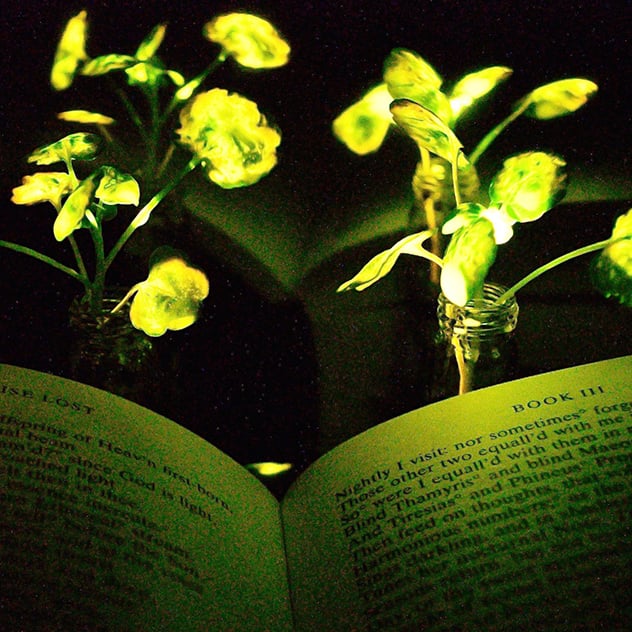
Totomoxtle by Fernando Laposse
Fernando Laposse uses native Mexican corn husks as a surfacing veneer to make tiles and marquetry. By laminating the husks onto wood veneer or thin MDF, tiles can be made in a range of colours, from deep purples to soft creams. The production of this new material is intended as an additional source of income to indigenous Mexican farmers, encouraging them to continue growing native corn, thus preserving the region’s biodiversity, rather than more profitable genetically modified strands.
Self-healing e-skin by Jianliang Xiao, Wei Zhang, Zhanan Zou and Chengpu Zhu
This electronic skin has been designed to sense pressure, temperature, humidity and airflow, offering a realistic sense of touch to people with prosthetic limbs. The flexible membrane is made from a polymer called polyimine, laced with silver nanoparticles to provide improved mechanical strength, chemical stability and electrical conductivity. Fully recyclable, the polymer is also self-healing, enhancing the durability and reliability of the device using it, and has potential applications for robots.
Almost twenty per cent of global electricity generation is used for lighting, creating CO2 emissions equivalent to seventy per cent of all the world’s cars. The Strano Research Group is addressing this issue by engineering glowing plants that could act as a replacement for electrical lights. Plants are immersed in a solution containing luciferase, the enzyme that gives fireflies their glow, allowing them to emit light in the dark. A single treatment carried out when the plant is a seedling is designed to last for its full life cycle.
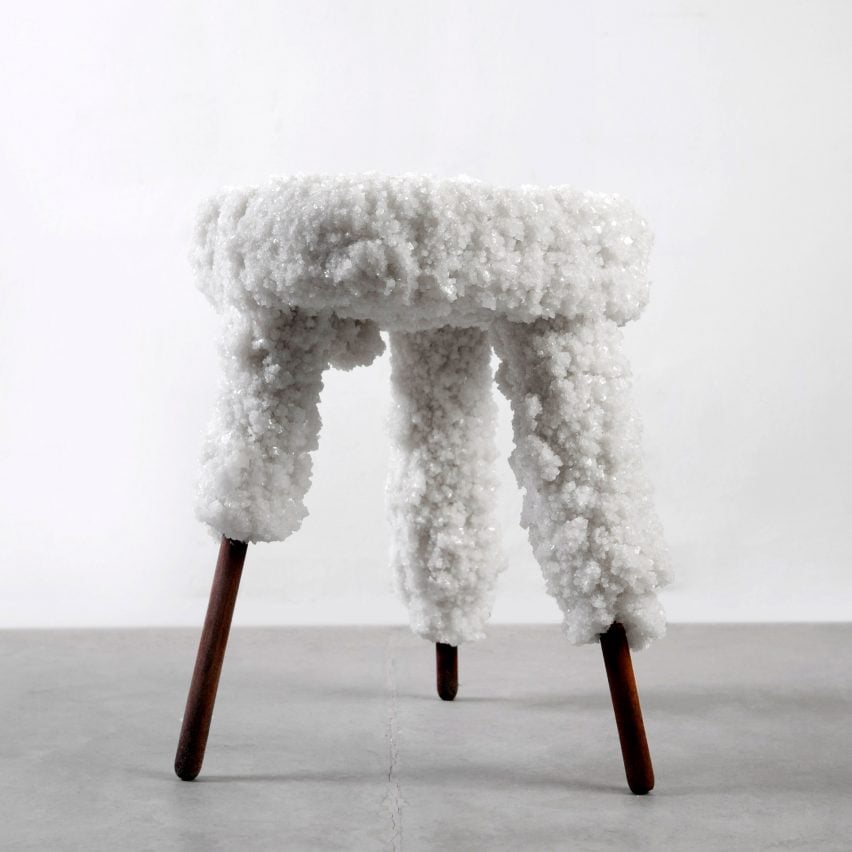
Bleached is a furniture series made out of recycled wood, vegan glue and luffa, immersed in the salty water of the Dead Sea. Over time, the luffa becomes a habitat for salt crystals to grow, creating a textured crust around the original construction. As a vegan, the designer was interested in creating objects that do not draw on animal life, making the uninhabitable environment of the Dead Sea an ideal site for experimentation.
Paperfuge by Prakash Lab
Paperfuge is a hand-powered centrifuge made of string, plastic and paper. It can spin biological samples at thousands of revolutions per minute, separating pure plasma from whole blood. This is a critical step in the diagnosis of infections such as malaria, HIV and tuberculosis. The device costs just 20 cents, weighs two grammes, and can easily be carried in a doctor’s pocket, making point-of-care diagnostics possible virtually anywhere.
Nest ceramic heaters by Estudio äCo
These ceramic heaters were designed to provide much-needed warmth to vulnerable communities in the region of Chiapas, Mexico. The multiple layers trap and conserve heat, which slowly dissipates through the ceramic outer shell. Made using simple techniques and materials, the heaters are designed to be easily replicable by members of the community.
Quicksee by PlenOptika
Quicksee is a portable device that allows healthcare workers with no optometry training to deliver accurate eye tests. In developing countries there is often limited access to specialised eye care and the expensive equipment it requires, meaning that people are unable to obtain prescription eyeglasses. This drastically affects their quality of life, educational potential and job opportunities. Quicksee is easy to use and displays a prescription estimate within approximately ten seconds.
SurgiBox by Debbie Teodorescu, Mike Teodorescu, Stephen Okajima and Team SurgiBox
SurgiBox is an inflatable tent that acts as a sterile operating theatre to be used in remote areas or disaster zones. The tent has a fan and HEPA (high-efficiency particulate air) filter that removes more than 99.9 per cent of contaminants. Once it is placed around the patient, surgeons reach into sleeves to perform their work. SurgiBox can fit inside a backpack, making it a portable and cost-effective solution for people who may otherwise lack access to safe surgical care.
Ori Studio Collection by Ori with fuseproject
Ori is a robotic furniture system that allows owners to reconfigure their apartment at the push of a button. Designed for small living spaces, one unit can turn a studio apartment into a full-size bedroom, living room or office, depending on the owner’s needs at that moment. The unit glides seamlessly from one setting to another along builtin magnetic tracks and can be plugged into a regular electrical socket.
Medal design for PyeongChang 2018 Winter Olympics by Sukwoo Lee at SWNA
Avoiding the usual Olympic clichés, the PyeongChang Winter Olympics medal takes Hangul, the Korean alphabet, as its source of inspiration. Imagining the alphabet as the ‘seeds of Korean culture’, designer Sukwoo Lee placed the Games’ consonants around the edge of the medals and extruded them across the surface, as if they’d grown into ‘stems’. The use of Hangul is a gesture of unification between North and South Korea as the alphabet is the root of their shared culture. The ribbon is made using gapsa, a traditional Korean fabric, while the wooden housing references historic hanok architecture.
Pretziada by Ivano Atzori and Kyre Chenven
Pretziada, meaning ‘precious’ in Sardinian, is a project that seeks to support artisanal excellence in Sardinia, while bringing the island’s rich heritage to a contemporary design audience. Sardinian artisans are paired with international designers and, through intensive research, collaboration and documentation, create new iterations of traditional products, such as rugs, ceramics and ironwork.
You & I rug collection by Nada Debs and FBMI
The You & I rug collection is the result of a collaboration between Lebanese designer Nada Debs and the Fatima Bint Mohammed Initiative, a carpet-weaving project providing fair employment for more than 3,000 Afghani weavers. Inspired by a line from the Sufi poet Jalal al-Din Rumi – ‘Apparently two, but one in soul’ – the collection intricately overlays contemporary carpet patterns on traditional ones, using natural dye and locally hand-spun wool.
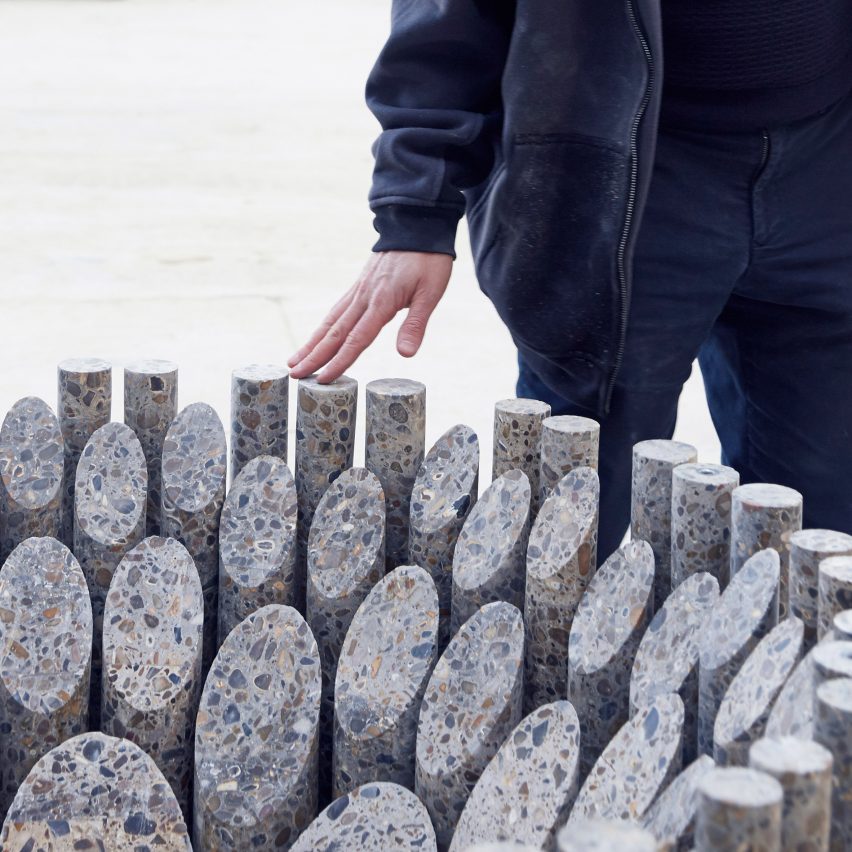
Excavation: Evicted by Paul Cocksedge, supported by Friedman Benda and Beatrice Trussardi
Excavation: Evicted was Paul Cocksedge’s response to the threat of imminent eviction from his east London studio, which was to make way for redevelopment. Unbeknownst to his landlord, the designer drilled and excavated several tonnes of material from the floor, and turned it into furniture. Exposing layers of concrete, Victorian brick, and other materials, the results revealed the site’s history while critiquing the state of the London property market.
Unhomely by Chris Schanck
Unhomely is a collection of fifteen pieces of furniture by Chris Schanck. They were made in Banglatown, the neighbourhood in his hometown of Detroit where he, and a large Bangladeshi community, live. Each piece is constructed using the designer’s ‘Alufoil’ technique, by which found objects are covered in layers of resin and coloured foil to create a jewel-like effect. Though employing inexpensive materials, the process is labour intensive, spurring Schanck to recruit a local community of artisans whom he has trained to use his technique.
Nintendo Labo by Nintendo
Nintendo Labo is a set of cardboard kits that allow players to transform their Nintendo consoles into a variety of interactive toys. These include an electric piano, a remote-control car and a doll’s house whose on-screen inhabitant can be cared for by completing different tasks. The kit is designed to teach users the basic principles of physics, engineering and programming, and stems from the success of the physically interactive aspect of the Nintendo Wii.
New £1 coin by Royal Mint and David Pearce
The new £1 coin, released in 2017, has been designed to be much harder to counterfeit than its predecessor. In contrast to its simpler, circular predecessor, which had become increasingly susceptible to forgery, the new coin has twelve sides and incorporates security features such as bi-coloured metal, micro-lettering and a hologram that displays the number one when viewed from one angle, and the pound symbol when seen from another. The coin’s ‘tails’ side was designed by David Pearce, then a fifteen-year-old student who beat 6,000 other entrants, including adult professionals, in a national competition.
Tetra countertop dishwasher by Heatworks and frog
The average household in the United States consists of 2.5 people, yet the average dishwasher holds thirteen place settings. Heatworks have addressed this discrepancy by designing a small, portable dishwasher that cleans two full place settings with a wash cycle of ten minutes. It uses only two litres of water per cycle and does not need to be connected to plumbing, making it easy to transport if people move home.
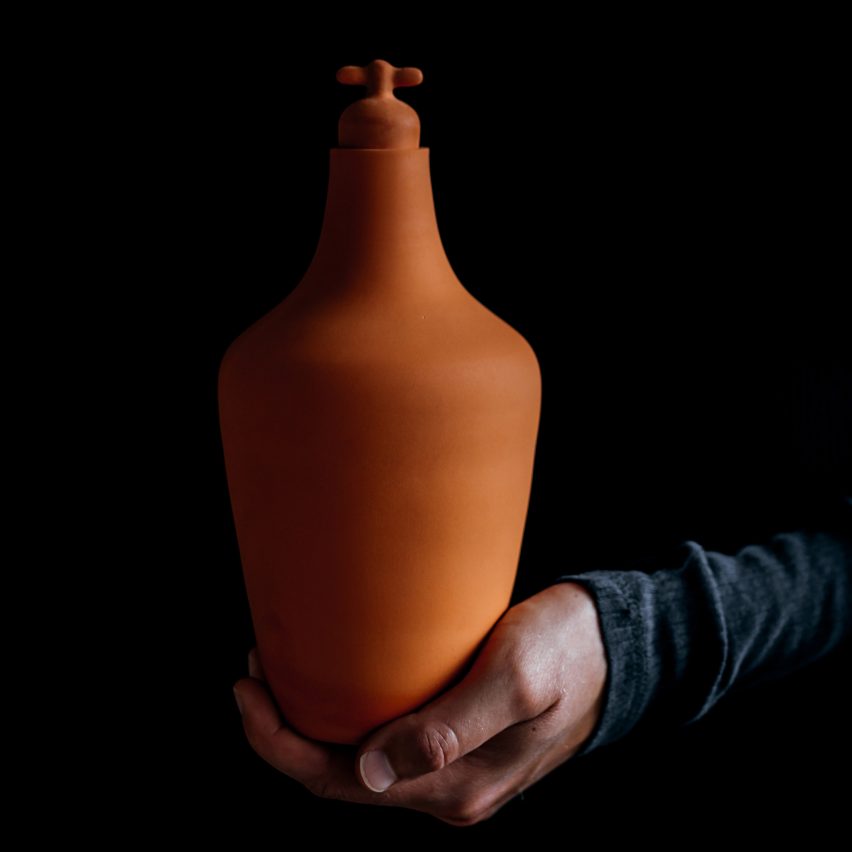
Ceramic Tap Water Carafe by Lotte de Raadt
Tap water is vastly cheaper and more environmentally responsible than bottled water. This series of terracotta carafes was designed to encourage people to return to drinking from the tap by making it a more pleasurable experience. The carafe stopper is a visual reminder of where the water has come from, while the unglazed terracotta naturally cools the liquid within.
Immersed in an aquarium, nendo’s Jellyfish Vases are made of ultrathin transparent silicon, dyed twice to make them look like silhouettes rather than solid objects when placed in the water. Changes in the strength and direction of the current cause the vases to subtly undulate like slow-moving jellyfish, playing with the usual relationship between vases and water.
JUST Water by Drew FitzGerald, Kara Rubin, Madwell and Tetra Pak
JUST is a company that aims to reduce the environmental impact of bottled water by creating an alternative to plastic. While maintaining the convenience of a single-use product, the JUST Water bottle is fully recyclable. The body of the bottle is made from responsibly sourced paper, while the cap is made from sugarcane.
Ore Streams by Studio Formafantasma
It’s predicted that by 2080, most of our metals will come from existing products, as it will be cheaper to reuse old material than to extract metals from the ground. In their multimedia project Ore Streams, design duo Formafantasma investigated this scenario, producing two years of research on global supply chains and speculative office furniture that enigmatically incorporates e-waste such as smartphone casings, laptop keyboards and gold scavenged from circuit boards.
Trashpresso by Miniwiz
Trashpresso is a mobile waste-recycling plant housed on a 40-foot trailer truck platform. Powered by solar panels, the unit enables recycling in off-grid and remote areas by reducing the process to five steps: shredding, washing, air-drying, dehumidifying and baking. So far, it has been used to upcycle plastic and fabric waste into architectural tiles, and has been demonstrated in Shanghai, Beijing, Milan, London and Tibet.
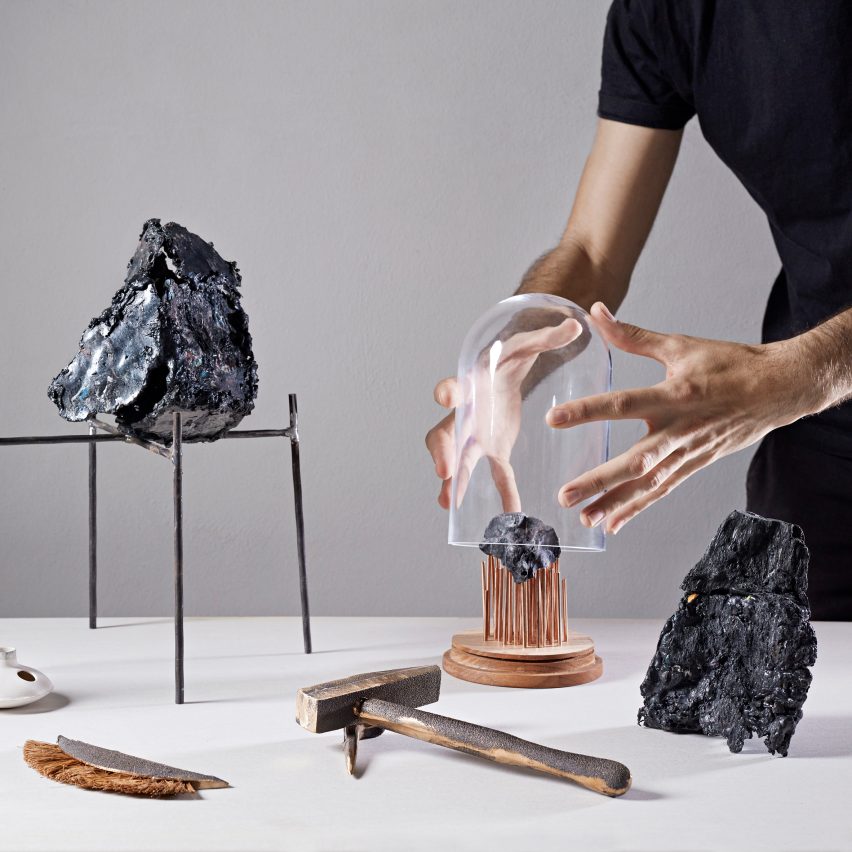
In this speculative project, the designer Shahar Livne has imagined a future in which producing petrol-based plastics is no longer possible, making humanity’s buried plastic rubbish a precious resource to be mined from the earth. Geological processes have transformed the waste into a clay-like composite, which Livne has crafted into objects, proposing new definitions of raw materials and beauty.
Caskia/Growing a MarsBoot by Liz Ciokajlo (OurOwnSkin) with Maurizio Montalti (Officina Corpuscoli)
If humans were to travel to Mars, there would be very limited room for taking necessary supplies. Officina Corpuscoli have investigated this dilemma by producing a boot grown out of mycelium, the root-like network of a fungus, fed with human sweat. The technique promises to give astronauts the ability to grow provisions with just a few spores during their long journey into space.
Arrangements by Michael Anastassiades for Flos
Arrangements is a modular lighting system that comprises spare, geometric elements which can be configured to create multiple sculptural compositions. Evoking jewellery, each unit can link with the others, playing with the double meaning of ‘pendant’ as both a piece of jewellery that hangs from a chain and a light that hangs from the ceiling.
JINS Design Project #01: New Normal by JINS and Jasper Morrison
Japanese eyewear brand JINS partnered with British designer Jasper Morrison in an attempt to create the ultimate basic in eyewear. After extensive research, Morrison refined the form of his designs by repeatedly examining them and making detailed improvements in 0.2 millimetre increments – a methodology that he compares to developing cutlery. The four resulting designs are intended to be universally appealing to and suitable for all, regardless of age, gender or ethnicity.
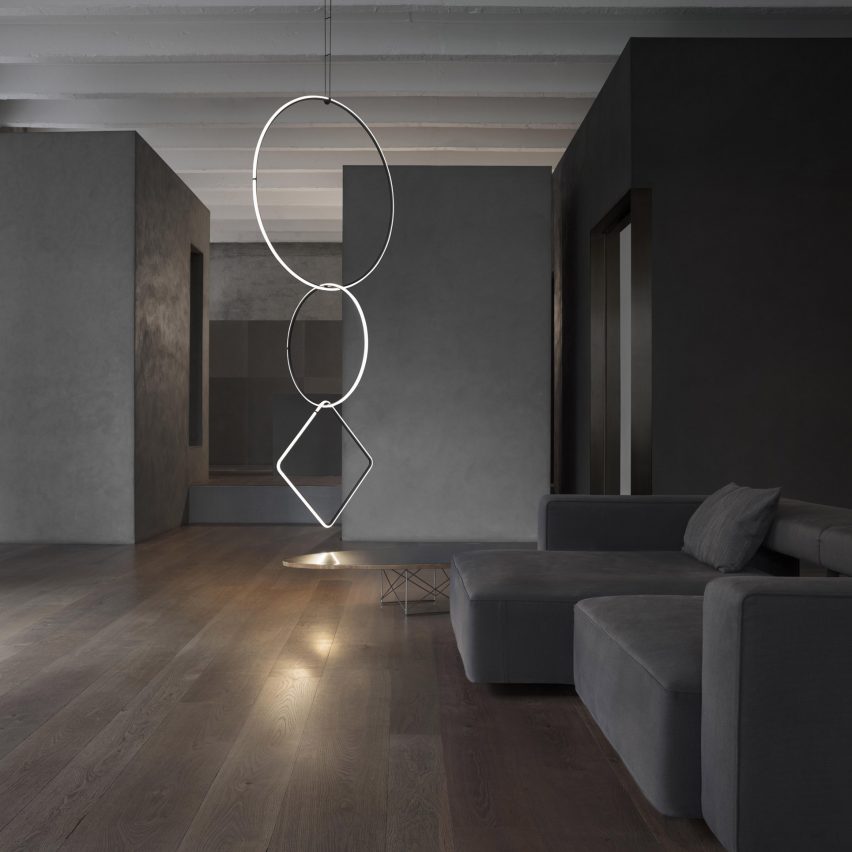
Re-engineered Brown Betty Teapot by Ian McIntyre
Ian McIntyre has revisited the Brown Betty teapot, working with Cauldon Ceramics, the oldest remaining maker of this classic British object. Together they have introduced a number of subtle but significant features, including a patented locking lid and non-drip spout. A tweak to the foot and neck allows the lid to be inverted into the body, enabling the teapot to be stacked and stored efficiently both in the factory and restaurants.
ENEA walking stick by Shiro Studio with Arup UK and MHOX
Shiro Studio seeks to address the stigma around walking sticks and their users by creating well-designed alternatives to standard mobility aids. Intended as a confident design statement rather than a manifestation of one’s physical limitations, their 3D-printed ENEA walking stick offers functional improvements on conventional walking sticks through better handling comfort and stability. The stick can even rest vertically on its handle, affording the owner greater freedom in their movements.
Fenty Beauty by Rihanna
Launched by Barbadian pop star Rihanna, Fenty Beauty is an affordable make-up line that caters to a wide range of skin tones, including those not accommodated by existing brands. Its foundation, for example, comes in forty shades, half of which are made to match a broad spectrum of darker skin tones; the latter routinely sold out in the first months of the product’s launch, indicating a previously unmet demand.
Transport
City Brain by City Brain Open Research (Wang Jian, Xue Guirong, Li Zhengui and Wang Min)
City Brain is a big data and cloud computing system that provides real-time analytics about a city, with the aim of optimising services. Currently, it’s being used to improve traffic flow in Hangzhou, China, where data gathered from roadside sensors and cameras is utilised to adjust traffic signals and send out instant alerts and route suggestions to drivers. It is estimated that the system will improve traffic speed in Hangzhou by twenty to forty per cent.
Virgin Hyperloop One by Hyperloop One
In May 2017, a full-scale Hyperloop prototype was successfully tested in the Nevada desert, bringing closer to reality an opensource technology developed by SpaceX founder Elon Musk. Hyperloop is a system designed to propel passenger and freight capsules at high speed in a low-pressure tube, with vehicles floating above a track using magnetic levitation. It is planned to reach speeds of up to 670 miles per hour, two to three times faster than high-speed trains, making it an attractive alternative to air travel for shortand mid-range distances.
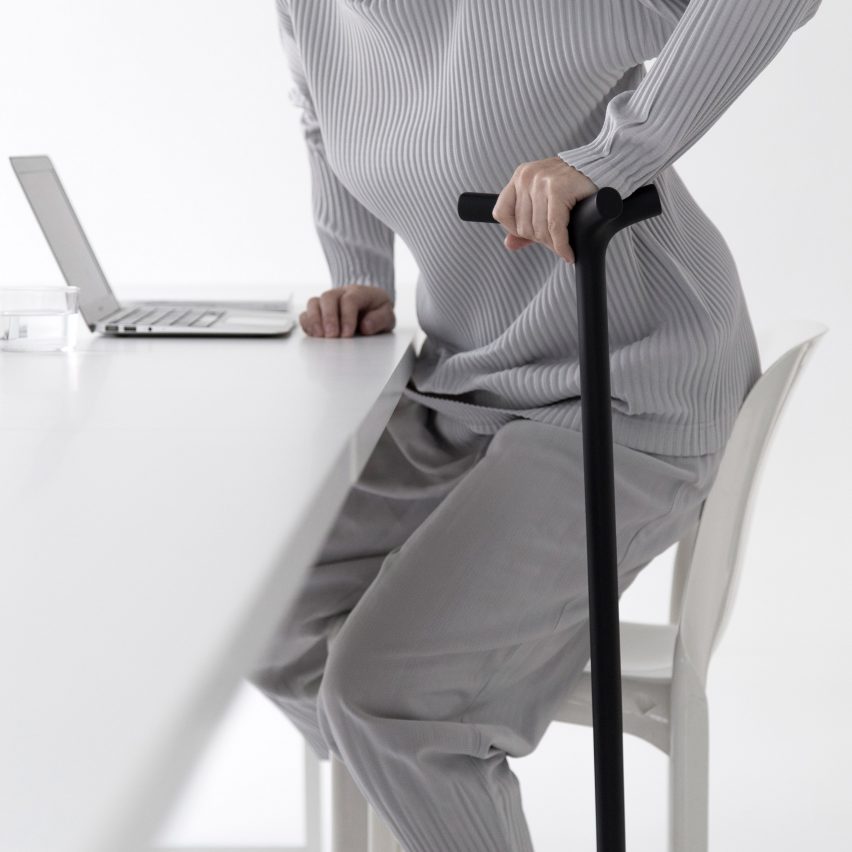
Kalk electric motorbike by CAKE
Kalk is an electric off-road motorbike. As an electric vehicle, it makes very little sound, does not produce harmful emissions and can be recharged using its accompanying solar panels. It weighs just under seventy kilos, making it easy to use, while the progressive span of the electric motor means that it does not need to have gears.
Falcon Heavy by SpaceX
On 6 February 2018, SpaceX successfully launched the world’s most powerful rocket, the Falcon Heavy. Capable of lifting 64,000 kilograms into low earth orbit, it is more than twice as powerful as its two main competitors. It is also considerably cheaper to launch than other rockets its size: among other reasons, its empty launch boosters are retrieved after lift-off for future use.
Mobike Lite by Naoto Fukasawa for Mobike
Mobike is the world’s first, and largest, bikesharing platform. Bikes are unlocked through an online app, allowing them to be parked and locked anywhere in the city without having to find a docking station. The latest model, designed by Naoto Fukasawa, is fifty per cent stronger than European standards, but weighs just 15.5 kilogrammes, making it the lightest shared bike available. Designed to be simple and intuitive, its minimalist aesthetic resembles the Mobike logo.